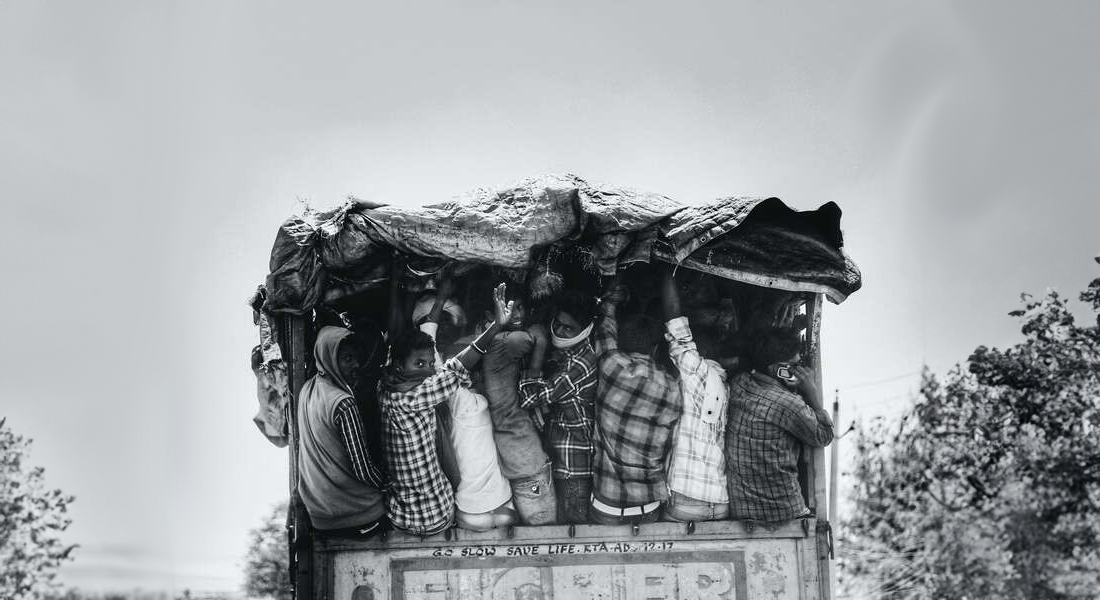Critical questions on learning from the COVID-19 disaster in India
New study critically analyses the Government of India’s response to the COVID-19 pandemic as a disaster.

A recent article published in the International Journal for Disaster Risk Reduction as part of the DfG-funded PROWELLMIGRANTS project (project no. 467477688) critically analyses the Government of India’s response to the pandemic. It focuses on how their framing of the pandemic as a disaster shaped a response which undoubtedly caused as many issues as it solved. The article builds on existing work which argues that it is impossible to separate analyses of the pandemic and the lockdown-response–or the pandemic-lockdown–when analysing India’s pandemic experience. The conceptual approach taken, frames the COVID-19 as a disaster that was made possible through political decision-making and then reimagined and reconfigured by, for, and through different actors and geopolitical processes as it continued to unfold. Three key findings from the review article are presented here.
Governance and Scientific Advice: Disaster Risk Management as accelerated centralisation in India
The first discussion section of the article explains how the Government of India enacted the National Disaster Management Act to provide the political and legal framework for a centralised response. The Act provided the political and legal basis for what is often termed a ‘command and control’ approach to disaster risk management where a centralised authority dictates the response across all levels of government. The article argues here that this command and control approach overrode existing federal structures and accelerated the trend towards an increasingly powerful, and arguably authoritarian, Union Government of India.
The command and control approach taken informed, and was informed by, a centralised and one-dimensional process of scientific advice. The article shows that the Government of India imagined the pandemic could be understood in a similar way to disasters associated with meteorological hazards such as cyclones. That is, decisions could be made on the basis of time and place specific forecasts which would allow efficient and proportionate response measures. This imagination underpinned the formation of a ‘National Supermodel’ which, despite openly working with inadequate data, informed most of the central government’s decision-making processes.
Socially and spatially differentiated impacts of the pandemic-lockdown in India
Both the scientific and political framing of the pandemic as a disaster informed a response that:
- Imagined the pandemic as a short-term disaster event that could be overcome through a rapid, command and control style response that would in turn allow a quick response to ‘normality’.
- Informed policies which did not adequately respond to the shifting and heterogenous contexts of implementation across a country the size of India.
- Framed people as potential threats to security which needed to be managed and policed rather than supported and cared for.
As a result, the existing literature on the pandemic suggests those who were disproportionately affected by the pandemic and lockdown-response belonged to one or more of these categories:
- People dependent on informal labour markets
- People on the move
- People living in informal settlements
- Cutting across all of these categories, people living in poverty.
One of the main drivers of risk was that welfare distribution in India tied to people’s state of origin rather than place of employment, prompting calls for a centralised welfare system administered by the central government. This raises a conundrum for India’s federal structure and indeed raises questions about the place of disaster risk management in this federal structure.
Paradigm shift?
The paper concludes that evidence of a paradigm shift, from reactive disaster management to proactive disaster (risk) management, remains thin on the ground. The article argues that such a paradigm shift will require a power-shift from the national level towards a bottom-up, situated approach to disaster risk management. Research and resources should be directed towards realising this goal.
Beyond the specificities of disaster management in India, the article also raises important questions for scholars and practitioners of disaster risk.
- What are the political implications of mainstreaming logics of risk management across all areas of government? Especially in government structures which federalised and/or led by governments with authoritarian tendencies
- How can disaster risk management policies become more informed by logics of care and health protection of people, rather than national security and the continuation of centralised authority?
- How can local governments be empowered to shape disaster risk management policies that respond to needs on the ground?
| Read the full paper here: McGowran, P., Johns, H., Raju, E., & Ayeb-Karlsson, S. (2023). The making of India’s COVID-19 disaster: A Disaster Risk Management (DRM) Assemblage analysis. International Journal of Disaster Risk Reduction, 93, 103797. https://doi.org/https://doi.org/10.1016/j.ijdrr.2023.103797 |
|
This story was written by: Peter McGowran a b, Hannah Johns a, Emmanuel Raju c d, Sonja Ayeb-Karlsson a e
|
